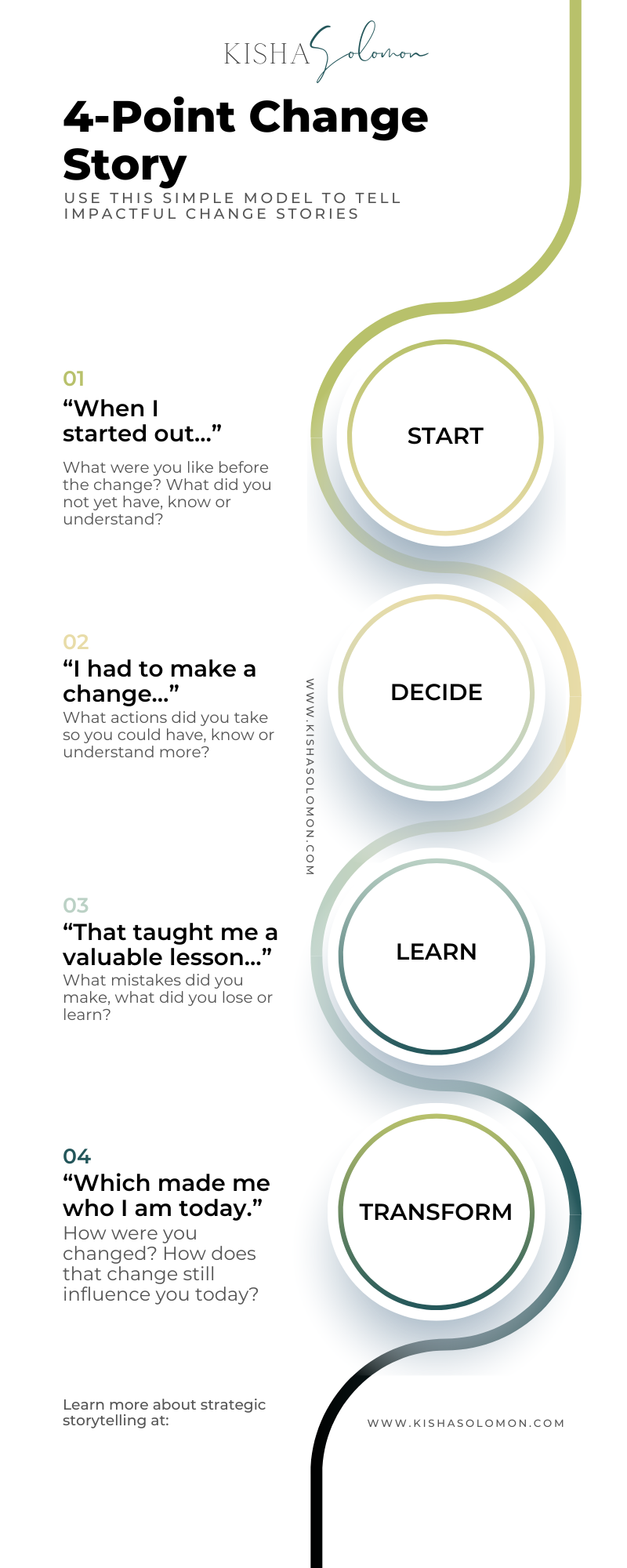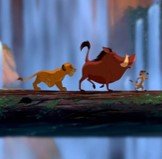How to Tell Impact Stories: A Simple Formula
if you want to tell a compelling impact story, Tell a story of change or transformation.
Stories of change and transformation take your audience on the journey from before to after. These stories grip your audience’s attention, inspire them and can even compel them to take action.
Any change or transformation story can be broken down into the following 4 parts:
Part 1 - Start
Part 2 - Decide
Part 3 - Learn
Part 4 - Transform
Using these 4 parts, you can quickly and consistently structure a story of change about yourself, your team, your customer or your organization.
One universal example I like to use to illustrate the use of this method - a method that I refer as the 4-Point Story Model - is the movie, The Lion King. In the move, the main character, Simba, goes through a transformation that can be mapped using the 4-Point Story Model.
Part 1 - The START
At the start – the main character exists in an unchanged state (zone of comfort or lack of awareness).
In the Lion King, this is when Simba is a cub protected by his father Mufasa.
02 DECIDE
Then something happens – It forces the main character to make a decision / to move away from the comfort zone / toward greater awareness.
In the Lion King – this is when Mufasa is killed by Scar and Simba runs away to live a carefree life
03 LEARN
But before they can get there – there’s a price to pay or a lesson to learn. Usually as a result of failure or setback.
Back home, Simba’s family suffers drought & starvation at the hands of the cruel leader Scar. The wise Rafiki reminds Simba of his responsibilities.
04 TRANSFORM
Finally the main character returns – a different & more expanded, mature or aware version of who they were at the start.
With his new friends by his side, Simba returns, defeats Scar. He becomes the new king and a father to his own lion cub.
When to use the 4-Point story MOdel
The 4-Point Story Model has been useful in a number of situations where I’ve needed to relay a story of how someone or something went through a process that resulted in significant or measurable change, aka, impact stories.
I often use the story model to help me bring more interest to storytelling scenarios where there’s a lot of context to be conveyed, and data alone won’t do. Below are a few examples of when I’ve used the model:
Team retrospectives, lessons learned
Leadership bio / team summary
Project start / update / closeout
Team member intro / exit
Performance assessments, 1:1 sessions
Product or service launch / new feature release
Strategic decision-making
Customer interviews









